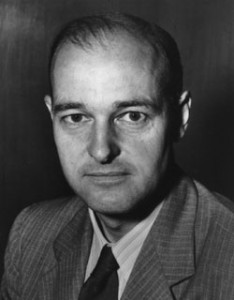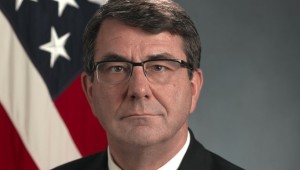Escalations in a New Cold War
Exclusive: The Obama administration poked Russia in the eye again by activating a missile defense site in Romania while building up NATO forces on Russia’s borders, acts that could escalate toward nuclear war, notes Jonathan Marshall.
If the United States ever ends up stumbling into a major conventional or nuclear war with Russia, the culprit will likely be two military boondoggles that refused to die when their primary mission ended with the demise of the Soviet Union: NATO and the U.S. anti-ballistic missile (ABM) program.
The “military-industrial complex” that reaps hundreds of billions of dollars annually from support of those programs got a major boost this week when NATO established its first major missile defense site at an air base in Romania, with plans to build a second installation in Poland by 2018.

President Barack Obama meets with President Vladimir Putin of Russia on the sidelines of the G20 Summit at Regnum Carya Resort in Antalya, Turkey, Sunday, Nov. 15, 2015. National Security Advisior Susan E. Rice listens at left. (Official White House Photo by Pete Souza)
Although NATO and Pentagon spokesmen claim the ABM network in Eastern Europe is aimed at Iran, Russia isn’t persuaded for a minute. “This is not a defense system,” said Russian President Vladimir Putin on Friday. “This is part of U.S. nuclear strategic potential brought [to] . . . Eastern Europe. . . Now, as these elements of ballistic missile defense are deployed, we are forced to think how to neutralize emerging threats to the Russian Federation.”
Iran doesn’t yet have missiles capable of striking Europe, nor does it have any interest in targeting Europe. The missiles it does have are notoriously inaccurate. Their inability to hit a target reliably might not matter so much if tipped with nuclear warheads, but Iran is abiding by its stringently verified agreement to dismantle programs and capabilities that could allow it to develop nuclear weapons.
The ABM system currently deployed in Europe is admittedly far too small today to threaten Russia’s nuclear deterrent. In fact, ABM technology is still unreliable, despite America’s investment of more than $100 billion in R&D.
Nonetheless, it’s a threat Russia cannot ignore. No U.S. military strategist would sit still for long if Russia began ringing the United States with such systems. That’s why the United States and Russia limited them by treaty — until President George W. Bush terminated the pactin 2002.
President Reagan’s famous 1983 “Star Wars” ABM initiative was based on a theory developed by advisers Colin Gray and Keith Payne in a 1980 article titled “Victory is Possible”: that a combination of superior nuclear weapons, civil defense programs, and ballistic missile defenses could allow the United States to “prevail” in a prolonged nuclear war with the Soviet Union.
Such nuclear superiority, Gray argued, could back up “very large American expeditionary forces” fighting in a future conflict “around the periphery of Asia.” By limiting damage to the U.S. homeland, missile defenses would neutralize Russia’s nuclear deterrent and help the United States “succeed in the prosecution of local conflict . . . and — if need be — to expand a war.”
Gray published that latter observation in a 1984 volume edited by Ashton Carter, who as President Obama’s Secretary of Defense now champions the new missile shield in Europe. So it should come as little wonder that Moscow is going all out these days in a sometimes ugly campaign to remind the world of its nuclear potency, lest NATO take advantage of Russia’s perceived weakness.
Russian Tough Talk
Moscow spokesmen have warned that Romania could become a “smoking ruins” if it continues to host the new anti-missile site; threatenedDenmark, Norway and Poland that they too could become targets of attack; and announced development of a new generation of intercontinental ballistic missiles designed to penetrate the U.S. missile shield.
Secretary Carter responded this month that “Moscow’s nuclear saber-rattling raises troubling questions about . . . whether they respect the profound caution that nuclear-age leaders showed with regard to brandishing nuclear weapons” — even as he announced new details of a $3.4 billion military buildup to support NATO’s combat capabilities.
U.S. military leaders say they are drawing up even bigger funding requests to send more troops and military hardware to Eastern Europe, and to pay for new “investments in space systems, cyber weapons, and ballistic missile defense designed to check a resurgent Russia.”
Speaking in February at security conference in Munich, Russian Prime Minister Dmitry Medvedev called for an end to such confrontation, noting that “almost every day [NATO leaders] call Russia the main threat for NATO, Europe, the U.S. and other countries. It makes me wonder if we are in 2016 or in 1962.”
But stepped-up conflict comes as a godsend to the Pentagon and its contractors, which only a few years ago faced White House plans for major cutbacks in funding and troop strength in Europe. It allows them to maintain — and increase — military spending levels that today are greater than they were during the height of the Cold War.
U.S. and other NATO leaders justify their buildup by pointing to Russia’s allegedly aggressive behavior — “annexing” Crimea and sending “volunteers” to Eastern Ukraine. They conveniently neglect the blatant coup d’état in Kiev that triggered the Ukraine crisis by driving an elected, Russian-friendly government from power in February 2014. They also neglect the long and provocative record of NATO expansiontoward Russia’s borders after the fall of the Soviet Union, contrary to the pledges of Western leaders in 1990.
That expansion was championed by the aptly named Committee to Expand NATO, a hot-bed of neoconservatives and Hillary Clinton advisers led by Bruce Jackson, then vice president for planning and strategy at Lockheed Martin, the country’s largest military contractor. In 2008, NATO vowed to bring Ukraine — the largest country on Russia’s western border — into the Western military alliance.
Cold War Warnings
George Kennan, the dean of U.S. diplomats during the Cold War, predicted in 1997 that NATO’s reckless expansion could only lead to “a new Cold War, probably ending in a hot one, and the end of the effort to achieve a workable democracy in Russia.”
Last year, former Secretary of Defense William Perry warned that we “are on the brink of a new nuclear arms race,” with all the vast expense — and dangers of a global holocaust — of its Cold War predecessor.

U.S. diplomat George F. Kennan who is credited with devising the strategy of deterrence against the Soviet Union after World War II.
And just this month, President Obama’s own former Defense Secretary Chuck Hagel warnedthat NATO’s plans to deploy four battalions to the Baltic States could result “very quickly in another Cold War buildup here, that really makes no sense for either side.”
If “we continue to build up the eastern flank of NATO, with more battalions, more exercises, and more ships and more platforms,” he told an audience at the Atlantic Council, “the Russians will respond. I’m not sure where that takes you.”
Nobody knows where it takes us, and that’s the problem. It could take us all too easily from small provocations to a series of escalations by each side to show they mean business. And given the trip-wire effect of nuclear weapons stored on NATO’s soil, the danger of escalation to nuclear war is entirely real.
As foreign policy expert Jeffrey Taylor commented recently, “The Obama administration is setting the stage for endless confrontation, and possibly even war, with Russia, and with no public debate.”
Returning to the days of the Cold War will buy less security and more danger. As President Obama contemplates what he will say about the lessons of nuclear war in Hiroshima, he should fundamentally reconsider his own policies that threaten many more Hiroshimas.
Jonathan Marshall is author or co-author of five books on international affairs, including The Lebanese Connection: Corruption, Civil War and the International Drug Traffic (Stanford University Press, 2012). Some of his previous articles for Consortiumnews were “Risky Blowback from Russian Sanctions”; “Neocons Want Regime Change in Iran”; “Saudi Cash Wins France’s Favor”; “The Saudis’ Hurt Feelings”; “Saudi Arabia’s Nuclear Bluster”; “The US Hand in the Syrian Mess”; and “Hidden Origins of Syria’s Civil War.” ]



Geen opmerkingen:
Een reactie posten